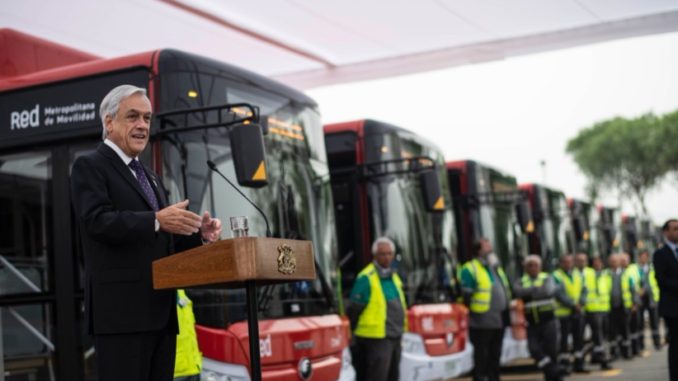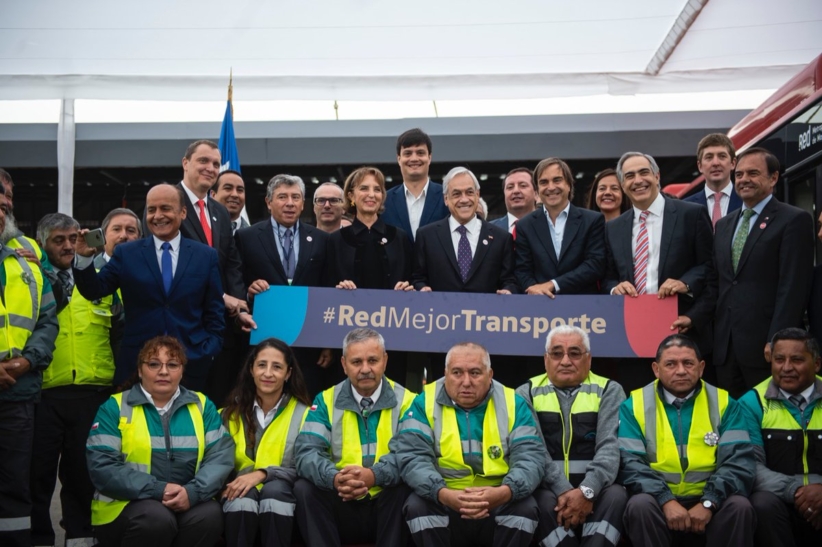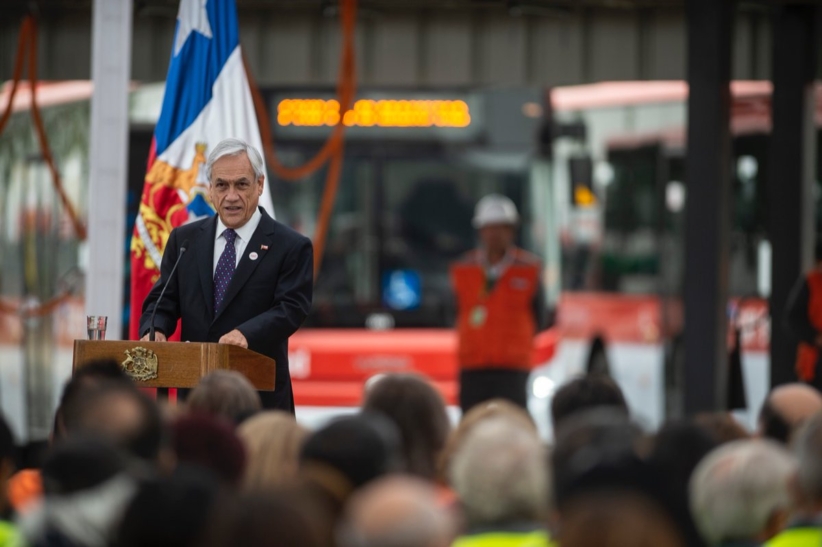
SANTIAGO – President Sebastián Piñera today presented another 100 new electric buses, which will double the current fleet for the Metropolitan Transportation System “RED”.
The goal for 2022 is that 80 percent of the public transportation buses will be electric, “giving more comfort … to everyone,” Piñera said in a speech.
The new batch of 100 Chinese electric buses will be incorporated into the public transit system on April 1 in Chile’s capital.

The buses of the RED fleet consist of the new electric buses and Euro VI vehicles, which are more ecological. All the units are characterized by having more comfort in the seats, air conditioning, Wi Fi, USB cell phone charger and an automatic system for detecting people that prevents entrapments. Added to this are very low levels of noise and vibration, as well as safety cabins for drivers and five cameras on board.
“There is a profound change in the public transport system,” said the president, accompanied by the Minister of Transport, Gloria Hutt, in a ceremony in which she also inaugurated the electro-terminal in Rinconada, in Maipú.
AHORA – El Pdte @sebastianpinera junto a la Ministra @GloriaHutt de @MTTChile presenta 100 nuevos buses eléctricos que se integrarán a Red e inaugura el Electroterminal de Rinconada. #RedMejorTransporte pic.twitter.com/T6JAeHfVvL
— Prensa Presidencia de Chile (@presidencia_cl) March 28, 2019
With the incorporation of the new buses, the President said that the Alameda will become the most important electric corridor in Latin America, with the operation of 158 electric buses.
The new 100 vehicles will be added to those already circulating in the streets of Santiago since December, reaching 203 fully functioning electric buses. By March 2022, 5,300 buses, including electric and Euro VI, will have been renewed, of the 6,600 that the system has.
“This means a change that started, that progresses gradually, but that will move forward without pause and permanently until we succeed in changing our public transport system,” Piñera added.

The Rinconada electroterminal is the largest in Latin America and has 37 electric chargers to supply two buses each. In the place, it will be possible to fully charge a bus in 2 hours 30 minutes.
“This new electrical technology is here to stay and that will allow us to move from a public transport system based on diesel fuels, with everything that means pollution and noise, to a modern and new public transport system based on electricity,” said the Chilean president.
Este lunes sumaremos 100 nuevos buses eléctricos en Santiago, duplicando flota actual y convirtiéndonos en líderes de electromovilidad a nivel mundial. La meta es que al 2022, el 80% de buses tengan estándar de calidad @Red_Movilidad dando más comodidad y tiempo libre a todos. pic.twitter.com/gPKt1sOZYn
— Sebastian Piñera (@sebastianpinera) March 28, 2019
In December 2018, Pinera unveiled the first 100 electric buses for Santiago’s transit fleet, which were made by Chinese electric vehicle maker BYD.
The Chilean government presented a more modernized public transit system called Metropolitan Mobility Network (RED) to replace the old Transantiago system on March 12.
The RED will cover the city’s public transport means from subways to buses, bicycles and suburban trains.
The government plans to install 40 digital stops and rehabilitate another 1,200 bus stops with the same features in different areas of Santiago this year.
In addition, the payment system for Chile’s transit system will be modernized, allowing users to pay via cell phone, credit cards or QR codes.
The government has also proposed to use electric buses in public transport in other regions of the country.



